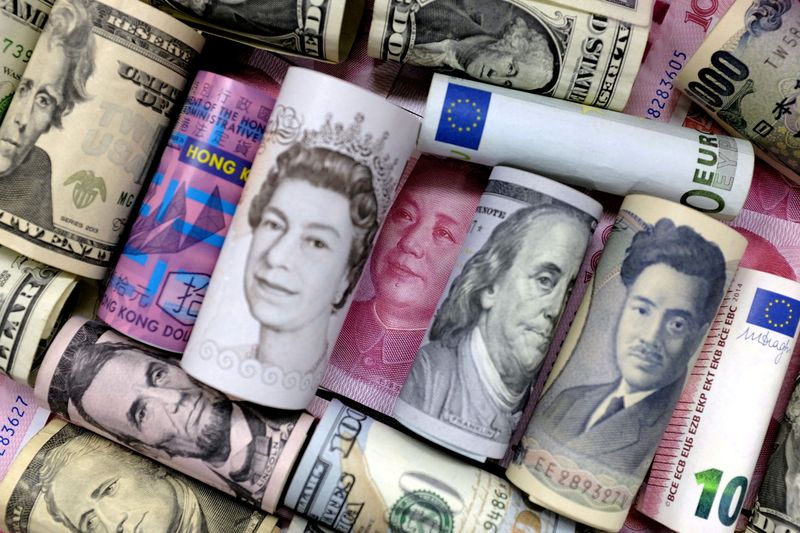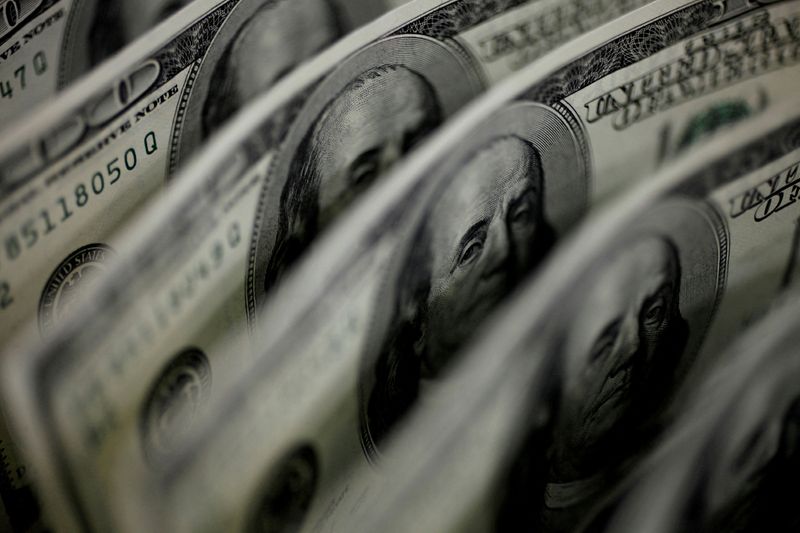NEW YORK (Reuters) – The U.S. dollar steadied on Thursday but was headed toward a second day of losses as markets sorted a raft of central bank policy statements for clues to coming differences in interest rates and support for their economies.
The dollar index of major currencies was down 0.4% in afternoon trading in New York after having fallen as much as 0.5% in the morning.
Losses came against currencies associated with more risk taking, as well as against the safe-haven Japanese yen and the Swiss franc.
Within 24 hours, the dollar index plunged 1.1%, starting from a spike up when the U.S. Federal Reserve posted a new policy statement on Wednesday, down to a low shortly after the European Central Bank and the Bank of England made announcements on Thursday.
“What a day,” said Marc Chandler, chief market strategist at Bannockburn Global Forex.
The British pound surged as much as 0.8% against the dollar after the Bank of England became the first major central bank to raise interest rates since the beginning of the pandemic.
The euro climbed more than 0.5% after the European Central Bank said it would slightly rein in stimulus.
The gentle move by the ECB contrasted with the more hawkish tone of the Fed, which said it will end its pandemic-era bond buying in March, paving the way for an expected three interest rate hikes in 2022..
The pound was last up 0.4% to $1.3314 and the euro was up 0.3% to $1.1332.
The swings suggested that some traders had moved to close out short positions against the euro and sterling, Chandler said.
The euro-dollar exchange rate also seems to be tracking changes in the spread between market yields of two-year U.S. and German government securities, Chandler said, adding that two-year yields are especially sensitive to central bank interest rate policies.
That spread, which had been trending wider this year with the relative hawkishness of the Fed to the ECB, narrowed slightly on Thursday in favor of the euro.
The different paths taken by major central banks underline deep uncertainties about how the fast-spreading Omicron variant will hit economies and about how much each should do to fight surging inflation, which is hitting hard in the United States and Britain, but less so in Europe.
The central banks included dovish elements in their statements, which gave markets confidence to move toward riskier trades without too much fear of recession from tighter monetary policy.
In cryptocurrencies, bitcoin fell 2% to $48,011.
========================================================
Currency bid prices at 3:30PM (2030 GMT)
Description RIC Last U.S. Close Pct Change YTD Pct High Bid Low Bid
Previous Change
Session
Dollar index
95.9790 96.3790 -0.40% 6.666% +96.4490 +95.8500
Euro/Dollar
$1.1332 $1.1296 +0.32% -7.25% +$1.1361 +$1.1282
Dollar/Yen
113.6400 114.0500 -0.35% +9.99% +114.2450 +113.5600
Euro/Yen
128.76 128.79 -0.02% +1.45% +129.6300 +128.4600
Dollar/Swiss
0.9192 0.9244 -0.56% +3.90% +0.9256 +0.9192
Sterling/Dollar
$1.3314 $1.3263 +0.38% -2.55% +$1.3374 +$1.3243
Dollar/Canadian
1.2781 1.2832 -0.39% +0.38% +1.2857 +1.2763
Aussie/Dollar
$0.7178 $0.7173 +0.06% -6.70% +$0.7224 +$0.7146
Euro/Swiss
1.0414 1.0437 -0.22% -3.64% +1.0466 +1.0410
Euro/Sterling
0.8510 0.8512 -0.02% -4.79% +0.8528 +0.8454
NZ
Dollar/Dollar $0.6791 $0.6788 -0.07% -5.54% +$0.6833 +$0.6759
Dollar/Norway
8.9920 8.9945 +0.11% +4.86% +9.0310 +8.9525
Euro/Norway
10.1893 10.1732 +0.16% -2.65% +10.2192 +10.1183
Dollar/Sweden
9.0350 9.0767 -0.11% +10.23% +9.0995 +9.0053
Euro/Sweden
10.2391 10.2508 -0.11% +1.61% +10.2723 +10.2163
(Reporting by David Henry in New York and Joice Alves in London; Editing by Hugh Lawson, Andrea Ricci and Dan Grebler)


























